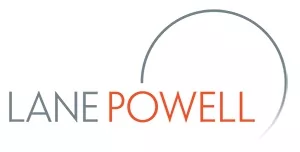The U.S. Sixth Circuit Court of Appeals on December 17 issued an order dissolving a nationwide injunction, thereby allowing the federal Occupational Safety and Health Administration (OSHA) to enforce its COVID-19 Emergency Temporary Standard (ETS). The ETS is a so-called soft vaccine mandate because it does not require anyone to be vaccinated, but rather, it allows covered employers — organizations with 100 or more employees — to determine for themselves whether to mandate vaccination or adopt weekly COVID-19 testing and mask mandates. See Lane Powell's Legal Update issued on November 9, found here.
The Sixth Circuit's December 17 order dissolved an injunction issued in November and opens the way for Federal OSHA (and state OSHA agencies) to implement and enforce the ETS. Federal OSHA responded by promising that it will not issue any citations for violating the ETS until January 10, 2022, and that it will defer enforcement of the testing mandate of the ETS at least until February 9, 2022. This delay will give large employers some time to determine how best to comply with the ETS.
Employers should be aware, however, that the U.S. Supreme Court may stay the recent order from the Sixth Circuit. This would have the effect of again preventing OSHA from implementing the ETS until a final decision from the Supreme Court.
The Sixth Circuit's Opinion
The majority opinion concluded that OSHA did not exceed its statutory authority when it issued the ETS because the Federal Occupational Safety and Health Act (OSH) "requires OSHA to issue an emergency standard if necessary to protect workers from a 'grave danger' presented by 'exposure to substances or agents determined to be toxic or physically harmful or from new hazards.'" It also concluded that OSHA was within its authority because a virus is an "agent that causes bodily harm." As examples, the opinion pointed to previously issued OSHA regulations that protected employees from exposure to hepatitis and HIV.
One of the three judges who heard the matter dissented. Among other things, dissenting Judge Joan Larsen took issue with OSHA's decision to make the testing and masking option "less palatable" than vaccination. She also argued that OSHA failed to show that COVID-19 posed such a "grave danger" as to require the ETS, and stated that the ETS went beyond OSHA's statutory authority, which she stated, ends at "the workplace walls."
Federal OSHA Announcement Deferring Enforcement
OSHA posted the following statement on its website on December 17, after the court's order was issued:
To account for any uncertainty created by the stay, OSHA is exercising enforcement discretion with respect to the compliance dates of the ETS. To provide employers with sufficient time to come into compliance, OSHA will not issue citations for noncompliance with any requirements of the ETS before January 10 and will not issue citations for noncompliance with the standard's testing requirements before February 9, so long as an employer is exercising reasonable, good faith efforts to come into compliance with the standard. OSHA will work closely with the regulated community to provide compliance assistance.
Request for Stay Filed With the Supreme Court
On Saturday, December 18, numerous employers and state attorney generals filed a request with the U.S. Supreme Court to stay the recent order. If the request for a stay is granted, the earlier injunction would be reinstated, and OSHA would be barred until the disposition of the action from enforcing the ETS. Supreme Court Justice Brett Kavanaugh, the assigned "Circuit Justice," has the authority to grant a stay or refer the request to the full Supreme Court. He could also take no action. In light of OSHA's decision to defer enforcement, at least until January 10, it would not be unreasonable to expect some action on the request for a stay before that date.
What Should Employers Do Now?
All Employers: At this point, it would be prudent for employers to begin considering how they will implement the ETS (or some modified ETS) so that they are prepared when or if it becomes effective. At the very least, employers should begin drafting a written policy, as required by the ETS. Employers will then be positioned to effectively and timely implement measures that may be compliant if and when the ETS (or some variation of it) becomes required. In short, employers can plan, but may want to delay implementation until there is more certainty about what discretion employers may have under the ETS.
Unionized Employers: Employers with unionized workforces will need to take additional steps when or if the ETS is implemented since they will have a duty to bargain with unions representing their employees regarding: (1) matters over which the employer has discretion (e.g., whether to require vaccination or only testing, or require testing for some but not all employees); and (2) a host of "effects" issues, including sick leave and paid time off, disciplinary policies to enforce the ETS, and incentive payments to encourage vaccination. To meet its bargaining duty, an employer would be required to give notice to the union before it implements discretionary aspects of the ETS or implements other measures (effects) associated with its implementation.
The content of this article is intended to provide a general guide to the subject matter. Specialist advice should be sought about your specific circumstances.


